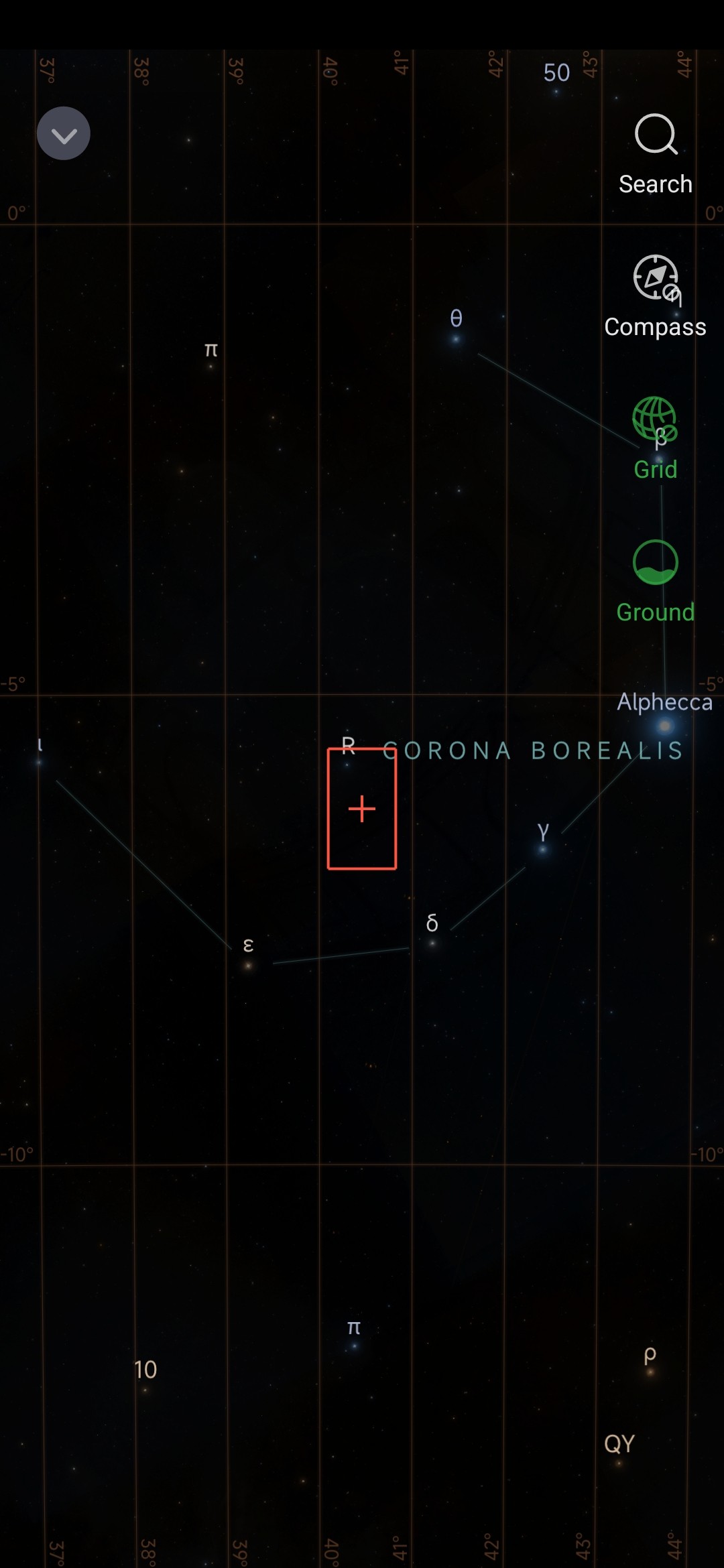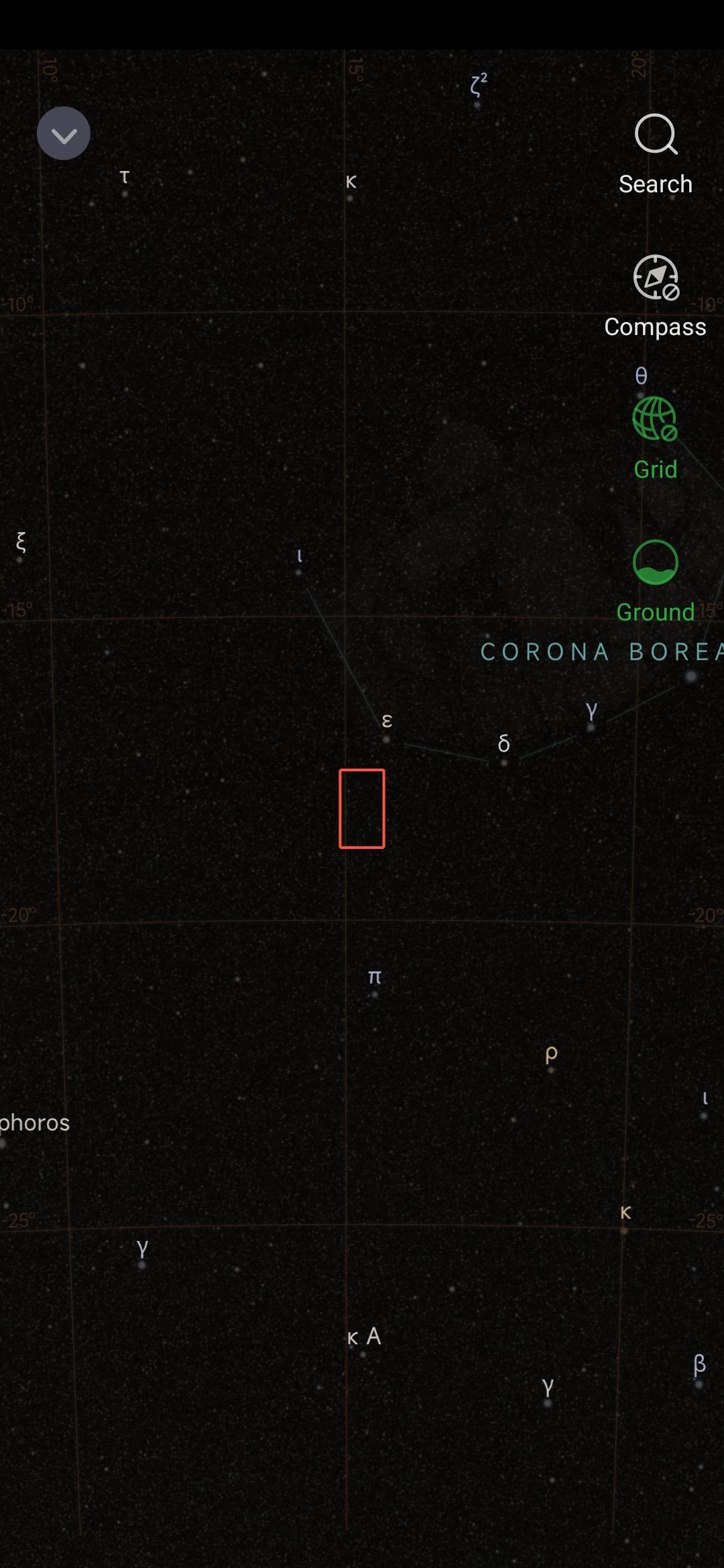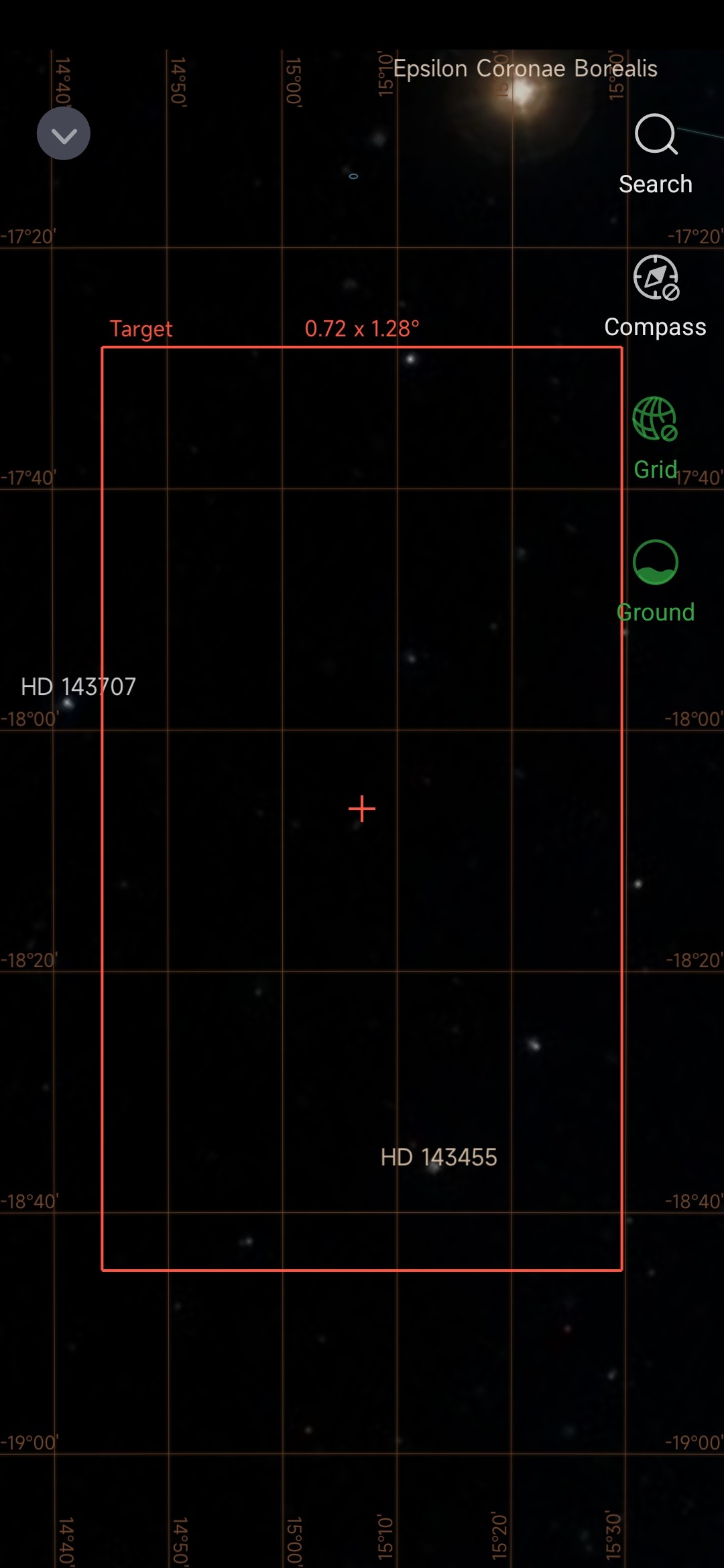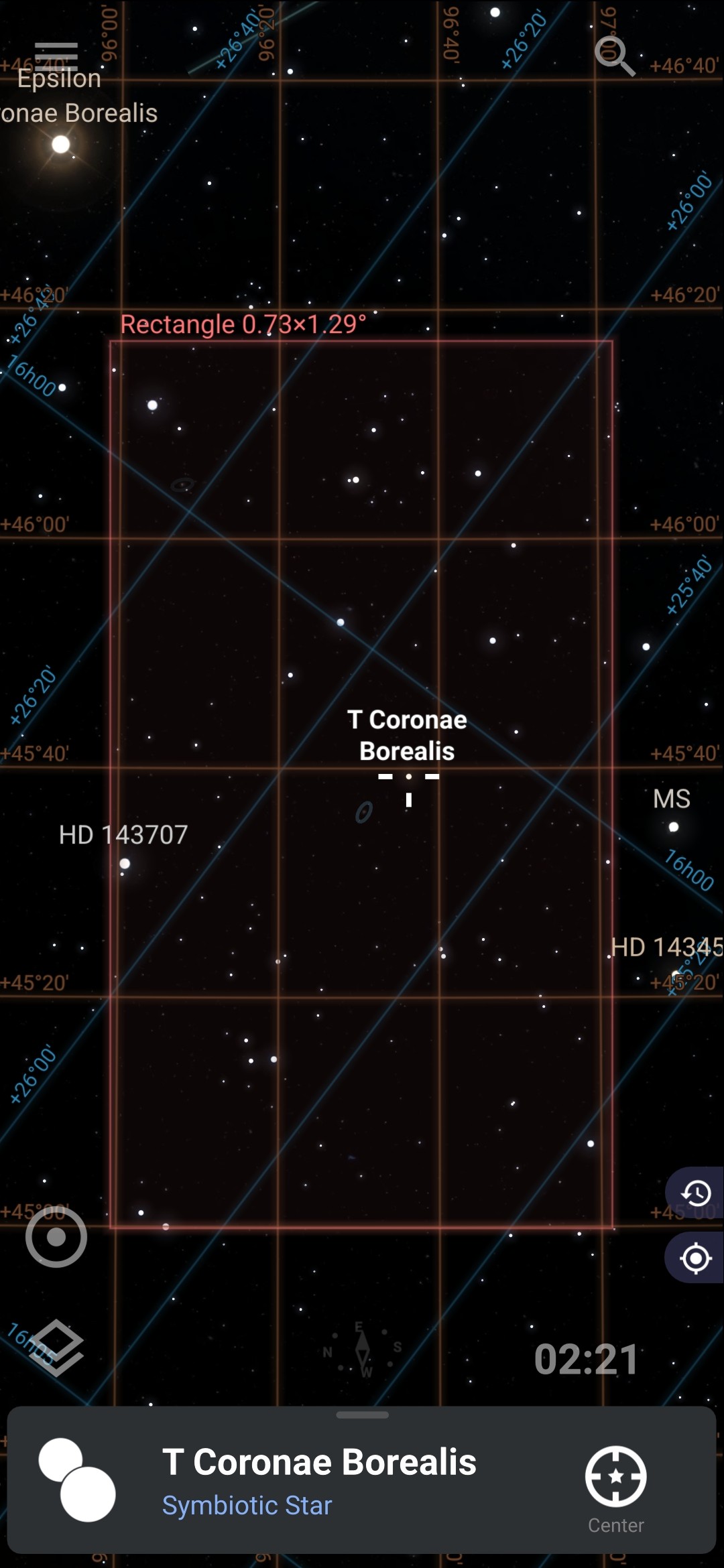If you enjoyed the quasar hunt, here is the next challenge. This is actually easier and for northern hemisphere dwellers this time (sorry Steven).
First, if you missed it, here is the piece of news from NASA's website:
https://blogs.nasa.gov/Watch_the_Skies/2024/02/27/view-nova-explosion-new-star-in-northern-crown/
If you do not have the patience to read the entire blog post, here is the executive brief - a dual star system, called T Coronae Borealis, 3000 light years away explodes periodically every 80 years or so (a truly once in a lifetime experience) and goes from magnitude +10 to magnitude +2 within a few weeks, that's a 3300x increase in luminosity! You cannot see anything fainter than magnitude 5 with the naked eye, but Polaris is +2 so if you can see it, you will be able to see this nova too. The explosion is expected anytime between February and September. Yes, it is not a supernova like the famed Betelgeuse one, which will also happen soon, anytime in the next 100,000 years or so, but it is the next best thing. Magnitude +10 is well within S50's capabilities, you should be able to see it even now with a 5 minute exposure from anywhere north of the equator. This explosion has already happened 3000 years ago, there are images for 38 of them traveling between the nova and us as we speak, this is just the closest one that should arrive anytime now.
So what can we, as S50 owners, do? We can take as many 5-minute exposures of this event over the next 6 months or so, measure the magnitude by comparing the nova against nearby stars in the same frame and plot the curve, I am pretty sure that some real astronomers will be able to find something scientifically relevant in that. This would be a crowdsourced project, the more S50s are used and the more pictures each one takes the better. And with observers in North America, Europe, South and East Asia we can keep an eye on this thing all the time, somewhere in the world there should be clear skies at all times, ideally we should be able to take an image every day until this thing ends.
In case you are interested, here are the technical details and the challenges, some of which ZWO could easily address with some very small software changes in their next app/firmware update.
Star name: T Coronae Borealis, aka HD143454
Constellation: Corona Borealis (obviously!), about halfway between Vega (Alpha Lyrae) and Arcturus (Alpha Bootes)
Magnitude: +10.13 right now, expected to go as luminous as +2 within a few months
RA/Dec Coordinates (J2000): 15h59m30.3s/+25˚54'57.3"
From where: Anywhere in the northern hemisphere
When: any night from now until it ends (September?); right now the best time is after 2AM but as we move into spring that time will also move earlier and earlier
To keep everything as similar as possible, all exposures should be 5 minutes in length, without using the light pollution filter and if you can do an autofocus just before taking the shot that would help too.
The challenge is finding the damned thing in SkyAtlas, especially before it goes boom. I keep complaining here about the limitations of the SeesStar app, you will see now what I mean. You cannot search for the star by name, either T Coronae Boarealis or HD143454, you cannot find that in SkyAtlas. You cannot even find Corona Borealis the constellation as a matter of fact. It is a minor one but come on! So you need to walk randomly until you find Corona Borealis, it's tucked between Hercules and Bootes, the main star is called Alphecca:

Your search then continues by going to Epsilon Coronae Borealis:

and then zooming in until labels for two smaller stars, HD143707 and HD143455 appear - you do not need to go very far from the Epsilon star, if you are more than a screen away you are too far already. Of course, searching for these two stars with the search engine would be easier but that doesn't work either. Even easier would be if we could enter the RA/Dec coordinates in the search engine and have the active window go there, with or without a target. Hell, even displaying the RA/Dec coordinates of the center of the window all the time as you stumble around blindly searching for the needle in the haystack would be better than this - ZWO, how hard would it be to implement all these features? Or at least one of them?
Anyway, you should be able to see both HD143707 and HD143455 and our target is where the red cross is in this screenshot:

Your image will be rotated by an angle that depends on the date and local time so you will have to account for that. Because SkyAtlas cannot be configured to show the sky as seen from a given location at an arbitrary date and time, like any other planetarium software apps.
This is how the image should look like now, at the beginning of March at 2AM using Stellarium:

So start taking 5-minute pictures as often as you can, and hold on to them. Each exposure consists of two files, a JPEG one, for quick viewing and a stacked FITS one, where all the useful data is located, we need both. We will not need individual 10-second subs, just the final 5-minute result. I will try to set up a repository where to upload and store them all, and post further details here. By autumn we should have our nice nova explosion magnitude curve.
What can ZWO do? First of all, turn off inclusion of GPS latitude and longitude data in the FITS files. If this crowdsourcing idea takes off, a lot of people will start sharing their FITS files and I bet most of them would not like their exact location made public. This should be off by default, with an opt-in checkbox in the app and a very clear warning that if you turn it on, sharing a FITS file is equivalent to sharing your exact GPS location. I am very serious, if you want to avoid potential liabilities for privacy violations in the future, you should do this ASAP. If you can only implement one and only one request from users, do this one.
The app has a list of relatively stale "astronomical events", like "Venus Conjunct Mars" and "Greatest Elongation of Mercury" and so on - remove all of that, they are in the past anyway, and completely irrelevant now, and put this at the top of the list: "T Coronae Borealis Nova Explosion, if you miss it, the next one is in 80 years". And include a SkyAtlas link to take you directly to the 15h59m30.3s/+25˚54'57.3" RA/Dec spot, so we do not have to jump through all these hoops to find it. And of course, implement all the other suggestions, the solar eclipse stuff, the automation features, remote control, mosaic mode, etc. ;-) I have a big list of features I want but I am holding off, not to overload you with requests. And put your marketing department to work, you have a winner in the S50, you just have to market it properly to sell a lot of units. If this nova thing cannot be used as free publicity to sell S50s, I do not know what else could.